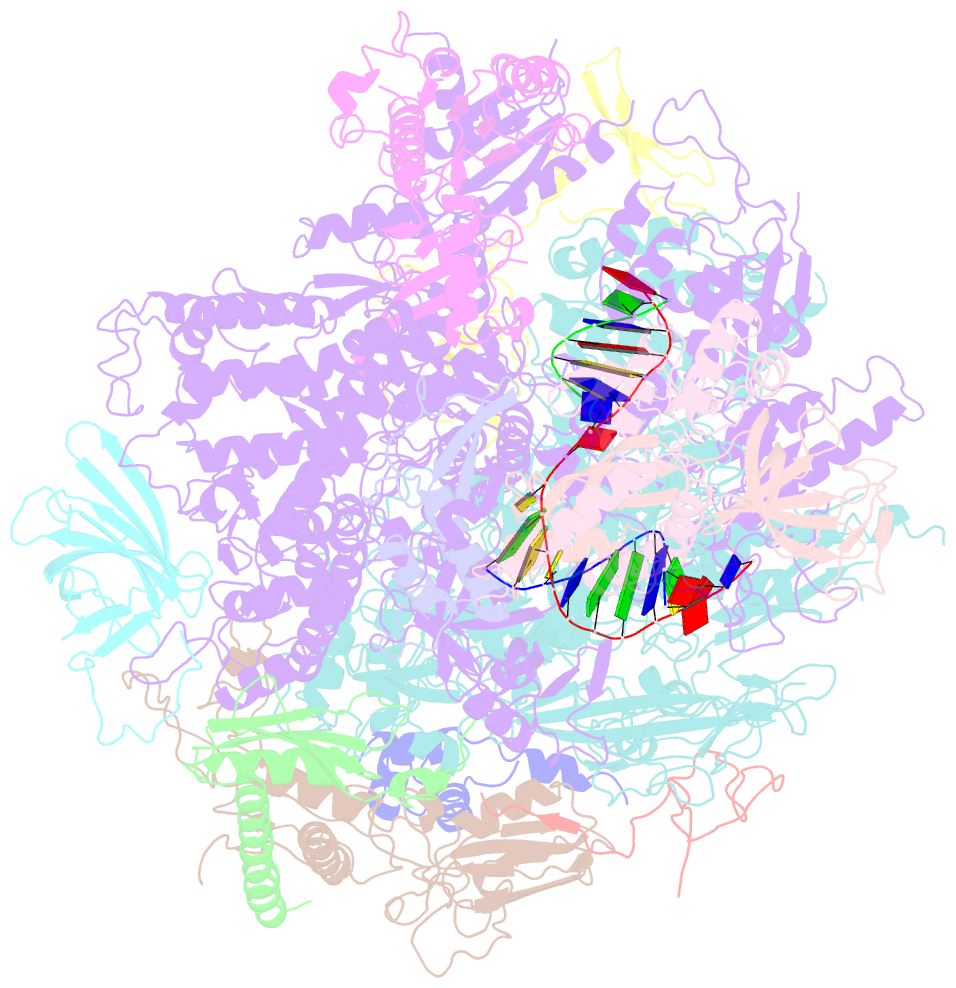Summary information and primary citation
- PDB-id
- 1y1w; SNAP-derived features in text and JSON formats;
DNAproDB
- Class
- transcription,transferase-DNA-RNA hybrid
- Method
- X-ray (4.0 Å)
- Summary
- Complete RNA polymerase ii elongation complex
- Reference
- Kettenberger H, Armache K-J, Cramer P (2004): "Complete RNA Polymerase II Elongation Complex Structure and Its Interactions with NTP and TFIIS." Mol.Cell, 16, 955-965. doi: 10.1016/j.molcel.2004.11.040.
- Abstract
- The crystal structure of the complete 12 subunit RNA polymerase (pol) II bound to a transcription bubble and product RNA reveals incoming template and nontemplate DNA, a seven base pair DNA/RNA hybrid, and three nucleotides each of separating DNA and RNA. The complex adopts the posttranslocation state and accommodates a cocrystallized nucleoside triphosphate (NTP) substrate. The NTP binds in the active site pore at a position to interact with a DNA template base. Residues surrounding the NTP are conserved in all cellular RNA polymerases, suggesting a universal mechanism of NTP selection and incorporation. DNA-DNA and DNA-RNA strand separation may be explained by pol II-induced duplex distortions. Four protein loops partition the active center cleft, contribute to embedding the hybrid, prevent strand reassociation, and create an RNA exit tunnel. Binding of the elongation factor TFIIS realigns RNA in the active center, possibly converting the elongation complex to an alternative state less prone to stalling.





